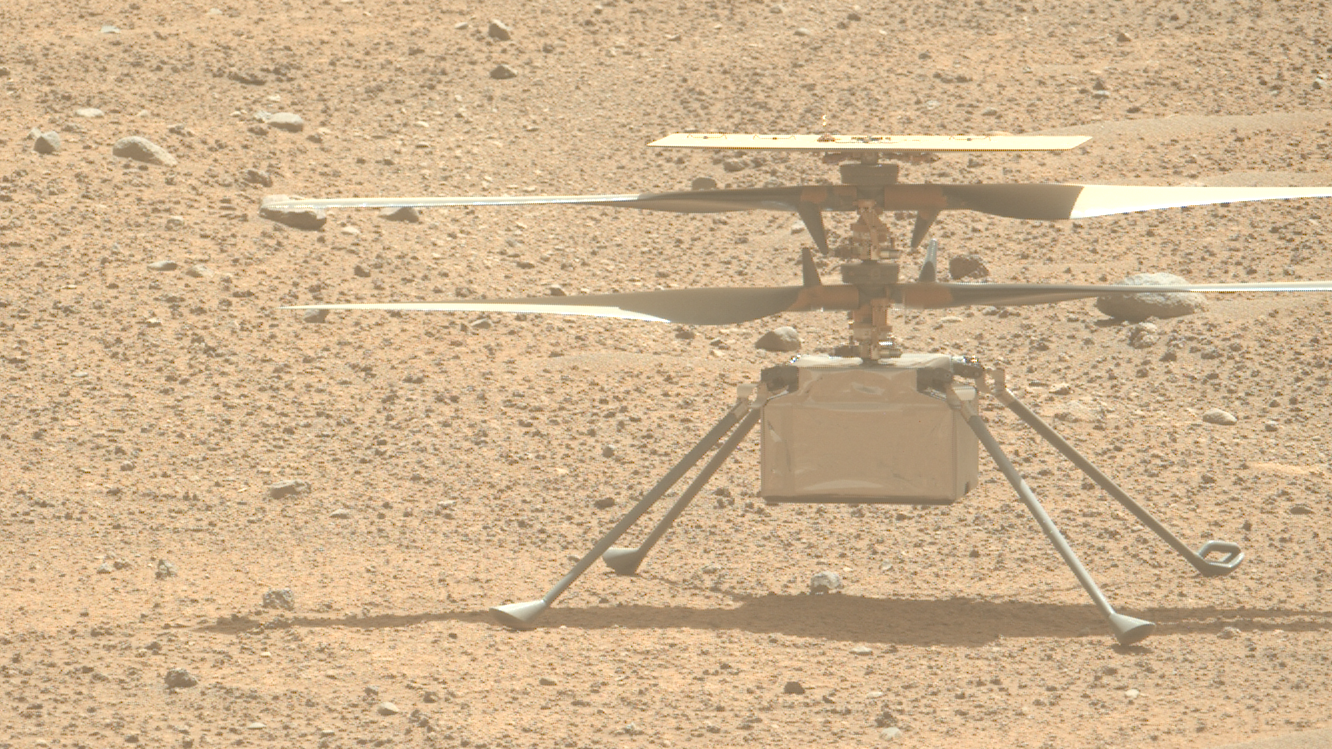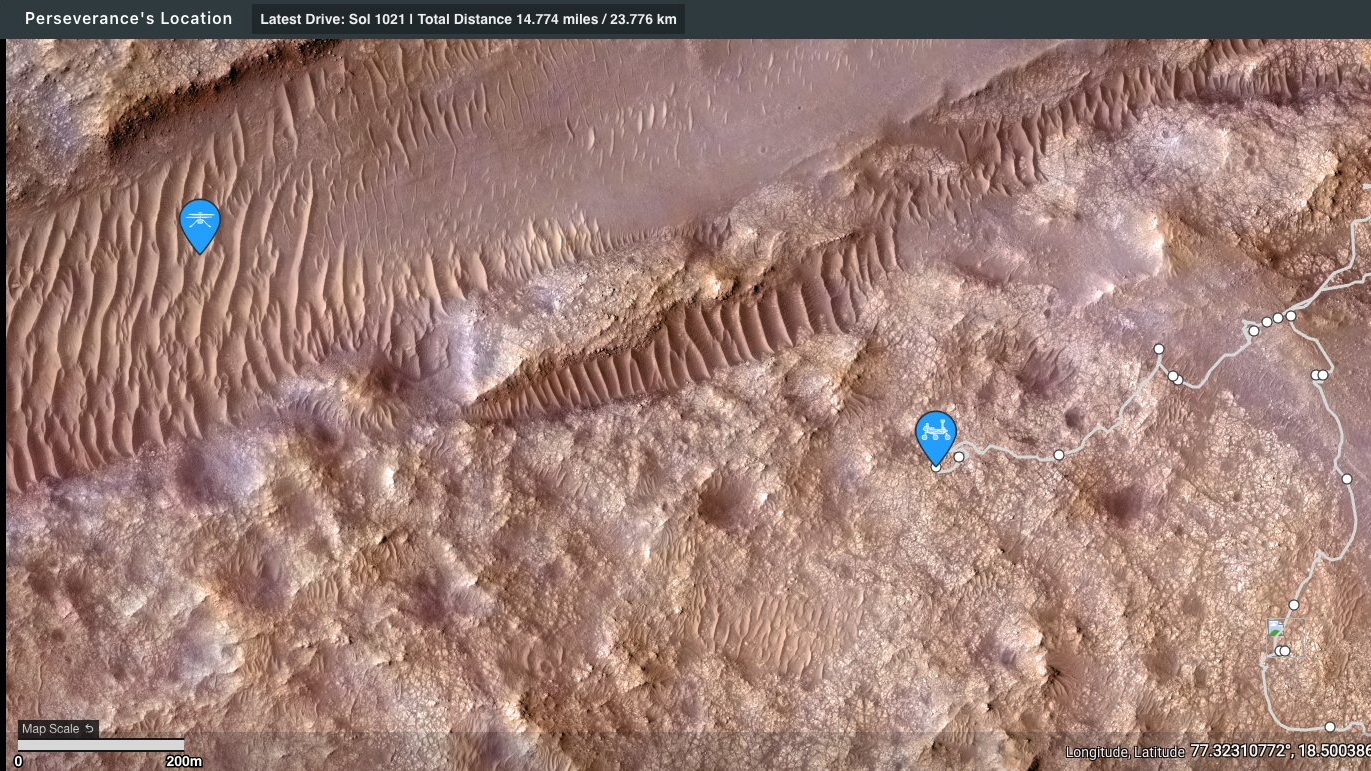NASA loses contact with Ingenuity Mars helicopter

Update for 11:30 a.m. EST on Jan. 21: NASA announced on Saturday evening (Jan. 20) that it has reestablished contact with Ingenuity after instructing the Perseverance rover "to perform long-duration listening sessions for Ingenuity’s signal." The mission team is working to determine what caused the communications dropout during Flight 72.
NASA's Ingenuity Mars helicopter has gone incommunicado.
Ingenuity's handlers lost contact with the 4-pound (1.8 kilograms) chopper on Thursday (Jan. 18), toward the end of its 72nd flight on Mars.
"Data Ingenuity sent to the Perseverance rover (which acts as a relay between the helicopter and Earth) during the flight indicates it successfully climbed to its assigned maximum altitude of 40 feet (12 meters)," NASA officials wrote in an update on Friday (Jan. 19).
"During its planned descent, communications between the helicopter and rover terminated early, prior to touchdown," they added. "The Ingenuity team is analyzing available data and considering next steps to reestablish communications with the helicopter."
Related: Mars helicopter Ingenuity phones home, breaking 63-day silence
Ingenuity and Perseverance landed together in February 2021 on the floor of the 28-mile-wide (45 kilometers) Jezero Crater, which harbored a big lake and a river delta billions of years ago.
Breaking space news, the latest updates on rocket launches, skywatching events and more!
Perseverance is hunting for evidence of past Mars life and collecting samples for future return to Earth. Ingenuity is serving as a scout for the car-sized rover, on an extended mission that NASA granted after the little chopper aced its original five-flight technology-demonstrating campaign in the spring of 2021.
It might be time for Perseverance to return the favor and help its little robotic cousin out.
"Perseverance is currently out of line-of-sight with Ingenuity, but the team could consider driving closer for a visual inspection," NASA's Jet Propulsion Laboratory in Southern California, which manages both robots' missions, said via X on Friday.
Ingenuity has stayed aloft for more than 128 minutes and covered a total of 11 miles (17.7 kilometers) during its 72 Mars flights, according to the mission's flight log.
It's unclear at the moment if those numbers will continue to go up. We'll have to wait and see if Ingenuity's handlers can get back in touch with the pioneering chopper, the first vehicle ever to explore the skies of a world beyond Earth.

Michael Wall is a Senior Space Writer with Space.com and joined the team in 2010. He primarily covers exoplanets, spaceflight and military space, but has been known to dabble in the space art beat. His book about the search for alien life, "Out There," was published on Nov. 13, 2018. Before becoming a science writer, Michael worked as a herpetologist and wildlife biologist. He has a Ph.D. in evolutionary biology from the University of Sydney, Australia, a bachelor's degree from the University of Arizona, and a graduate certificate in science writing from the University of California, Santa Cruz. To find out what his latest project is, you can follow Michael on Twitter.

